By Hedley Swan, Digital Strategist at DashDigital
It used to be that upgrading or optimizing your technology or media was a cycle of extreme preparation, negotiation, expense, and risk management. However, our post-covid world (and largely even before that) is no longer friendly to this type of high friction cycle.
Emerging markets demand constant attention to your market position and a near-constant evolution of digital technologies that drive industries forward. One effective way of navigating this accelerated business environment is by embracing a more agile and consistent optimization of your digital strategy. This is especially true in digital media. With more and more channels of media content coming online, and finding homes in various consumer and business sectors, navigating the digital media environment has never been more complicated, or more accessible.
And if you are feeling confused, or frustrated with your current media campaigns, fear not, we are here to help.

Stepping Off The Old Media Treadmill
With digital media strategy the field is always changing,but the goal posts remain the same. Capture attention and prompt engagement. Going it alone is like running in place. The market, owing to politics, economy, and technology, continues to shift. Unless you’ve got resources and infrastructure, it’s usually going to be more helpful to work with a marketing consultant or agency for digital media strategy optimization. This is an arena where experience is a major asset, because your brand image is always on the line. Professional marketers provide unique insights fundamental for best results through continually renewing digital media strategy. These include:
How Digital Media Strategies Are Continually Shifting: The Strategic Impact Of Digital Marketing
Where Digital Media Strategy Fits In A Business Strategy: High Digital Ambitions
Research/Prep Tactics For Foundational Success: Building Strategic Muscles
Specific Industry Insights – Evolving What Defines Business Strategy
Positioning Strategy: Where “Strategy” Meets Media
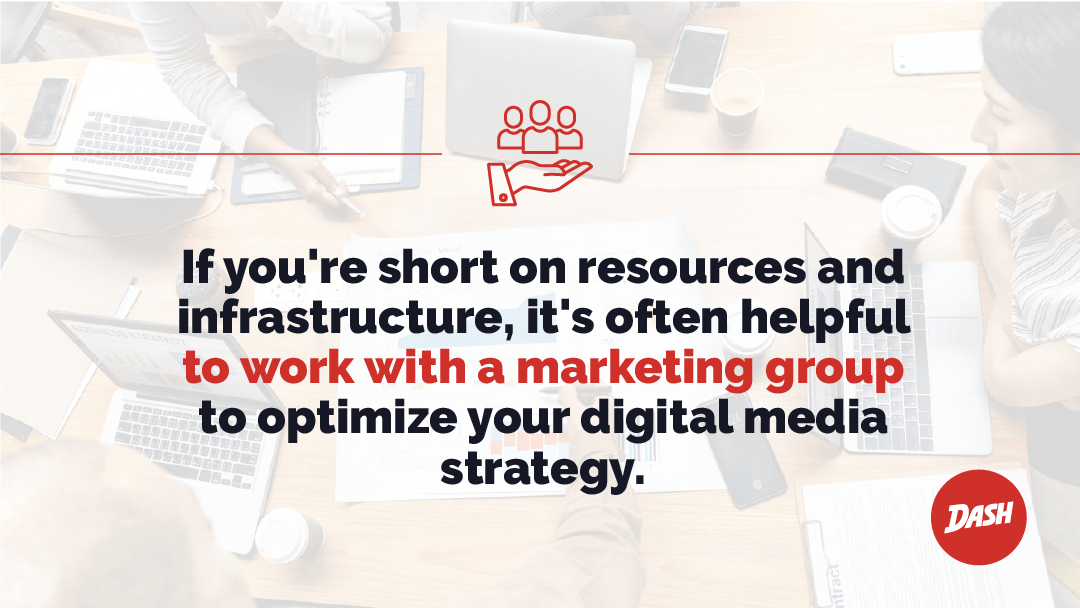
How Digital Media Strategies Are Continually Shifting: The Strategic Impact Of Digital Marketing
Effective digital media strategy for marketing didn’t really start coming into its own until the nineties. There was potential in the eighties, but technology wasn’t quite at a point where the newest strategies could do much but support older options. The “dot.com” bubble hit the market in the nineties, and toward the end of that decade, search engine Google from company Alphabet, Inc. developed.
From there, another cosmic shift hit about a decade later around 2010 when cloud computing became viable, and Microsoft launched “Azure”. Now, marketing decentralization via mobile technology has changed the game once again. More people access the web through mobile devices than they do through traditional desktop computers.
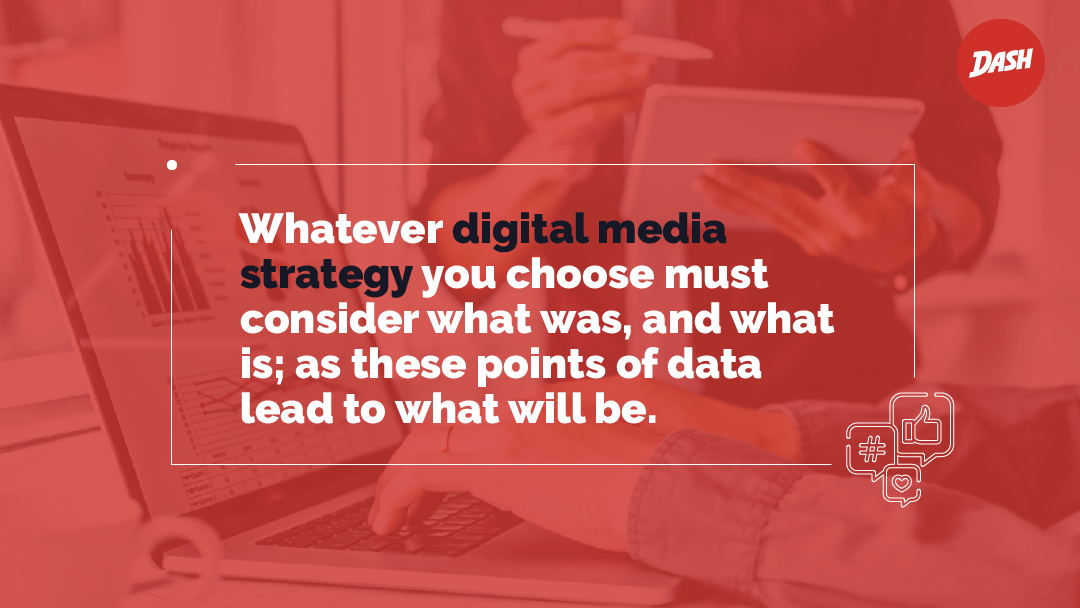
We now face the rise of artificial intelligence and The Internet of Things, or IoT, these represent whole new frontiers in digital media. From tiny screens to content wholly generated by AI. based on a script. And these technologies will also shift in the fullness of time. So whatever digital media strategy you bring must consider what was, and what is; but must contain a critical path towards discovering, adopting and optimizing what comes next.
Essentially, digital media strategy needs to be continuously developing in a way that keeps pace with the market. Many companies have incorporated outsourced marketing and media professionals to save time, resources, and complications as regard keeping pace with an evolving digital media strategy that works.
Key to effective digital media strategy is scalable change incorporating the latest tech that your target market has or is embracing. Social Media Optimization (SMO), Search Engine Optimization (SEO), and now Augmented Reality marketing loom near on the horizon; but you don’t want to jump in too quick, as resources can be spent in vain. Working with professionals, and deeply understanding your position in the market establishes innovation balance.

Where Digital Media Strategy Fits In A Business Strategy: High Digital Ambitions
Certainly not all businesses are in a place where extensive resources can, or should, be devoted to digital media. However, it’s hard to imagine businesses where this wouldn’t be useful. Even a metal-working facility in the desert needs to attain and maintain clientele. Think of it this way: great white sharks are known as obligate ram ventilators. That means they have to keep swimming to breathe. Businesses must keep profiting and expanding to maintain viability over the long-run. That means continuously acquiring new customers. The emphasis is on new customers, because your current customers are already accustomed to how you do business, but new customers are actively comparing you to market expectations and competition, so are a better guage of business health.
Digital media is great for that, and may represent an exceptionally efficient means of outreach. This is especially true for countries like Australia, where rural populations made digital media harder in the past. But as more communities become more connected through high-speed internet, and the upcoming satellite internet options, digital footprints are becoming more visible in even the most remote parts of the world. Capitalizing on this reality is where your strategy will really be put to the test.
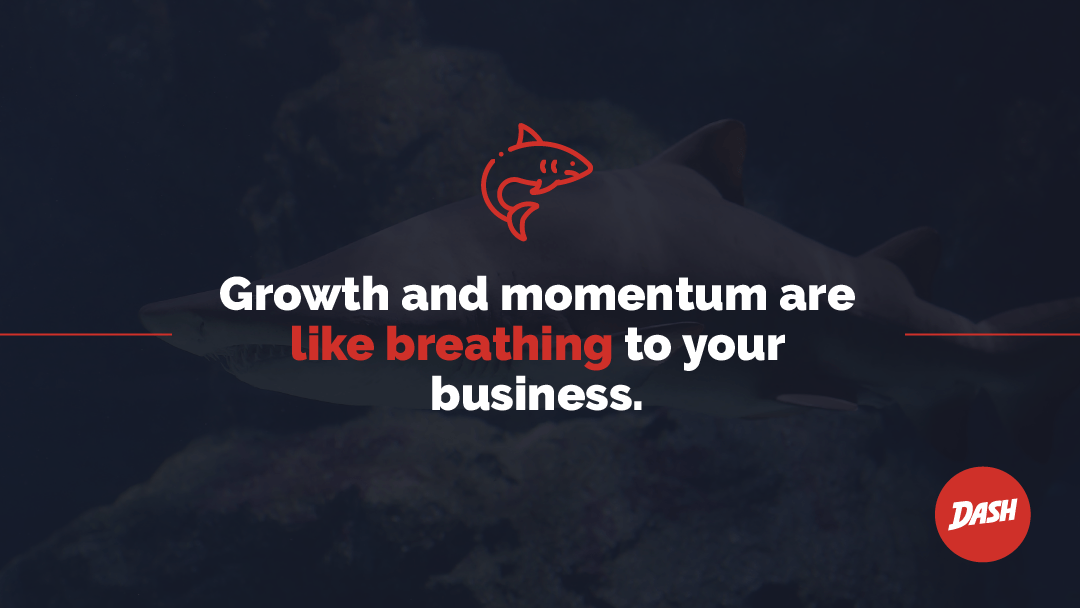
Processes need to be created in a way that matches the pace and position of your target market. You need to have a clear accounting of the media landscape you want to target most. Do you plan to engage people at their computers? On their phones? In a public place? In their Cars? Their ears? On their couches? The variety of mediums is substantial, and that’s before you get involved with platforms or formats.
There is a threefold approach worth pursuing here, we’ll cover that more closely later on. Essentially, though, you need to have a realistic goal involving media outcomes, and that goal should be supplemented by relevant metrics determining if and how it’s been achieved. Again, professional assistance through operations specializing in digital media can make the difference by lending you the clarity of professional experience when crafting these goals.
Such options help determine how buyers feel about your brand, what their buyer’s journey looks like, and the way in which they make a decision. Brand messages should be aligned to these things. Your media “build” needs to be centered around such marketing realities. That build may incorporate infrastructural shifts at the core level. Different tactics will be necessary for different stages of a given buyer’s journey. This can incorporate the content on your website, methods of lead capture, lead nurture, brand awareness and other areas of operation.

Your digital media strategy should also account for an important byproduct: Data. Automated outreach, collection, storage, and data maintenance can be acquired from your digital media efforts. Such options allow for manual integration where necessary. For example, Customer Relationship Management software, or CRM, can only be automated to a certain extent. But more and more businesses are creating consumer data platforms to securely house and analyze the data they collect through all their customers at all touchpoints, including digital media.
Research/Prep Tactics For Foundational Success: Building Strategic Muscles
This is, understandably, complicated. Research and preparation are necessary to identify and employ proper strategic options. It’s important to not be in a rush, and give yourself and your team time to ask hard questions and think up innovative ideas.
Customer journeys will need materials calibrated for each step of said journey. More and more media saturates every area of marketing. Essentially, you’ve got to build digital media strategy “muscles” which become continuously more efficient with each sales cycle where they are “flexed”.
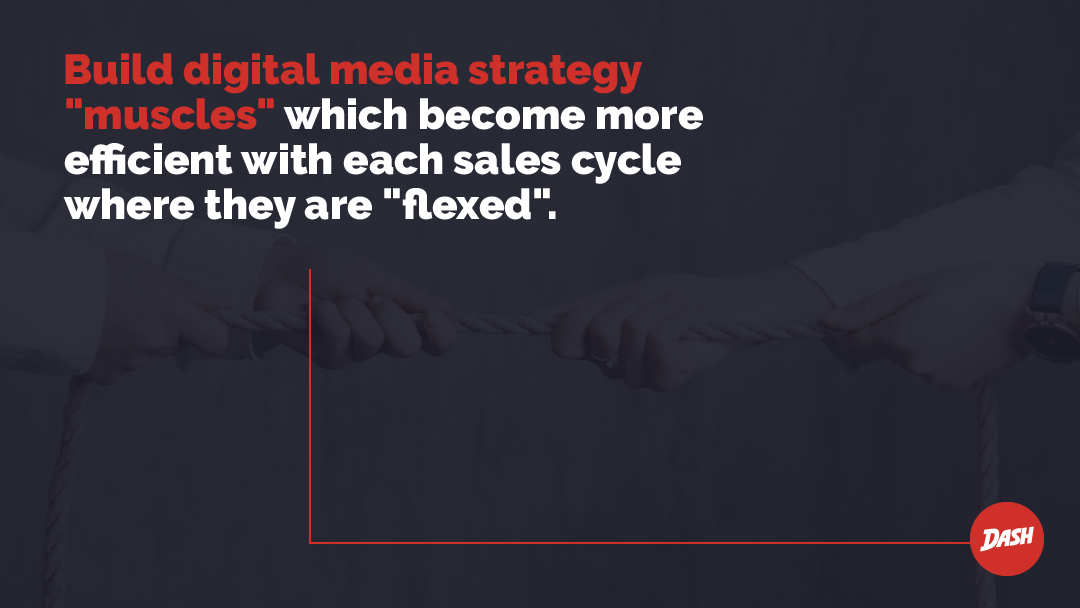
The level of efficiency requires data to demonstrate positive impact. A business can spend years “reinventing the wheel” as they seek to find the best balance, and by the time they’ve discovered it, the market will have changed. The solution is to develop a strategic roadmap you can continuously revisit and plan to continuously evaluate and optimize each component of your media plan on a consistent basis. This means that your maintenance and upgrade dollars get spent annually instead of every five years, and the result is far superior.
Specific Industry Insights – Evolving What Defines Business Strategy
It’s quite recommendable to utilize industry insights specific to what you do, and which change based on necessary shifts in business strategy. Strategies “evolve” in a way that ultimately matches associated digital transformation. In many industries, some manual processes can’t be replaced, many can, and doing so can even reduce operational costs involving personnel.
But digital media itself is rarely subject to these same restrictions. What you need to know is HOW your industry communicates. Do they do newsletters? Magazines? Streaming Shows? Awards? Conventions? Every one of these formats either has a digital equivalent or is in the process of evolving one. One advantage of embracing digital media in established industries is positioning yourself or your business as a thought leader in your industry.
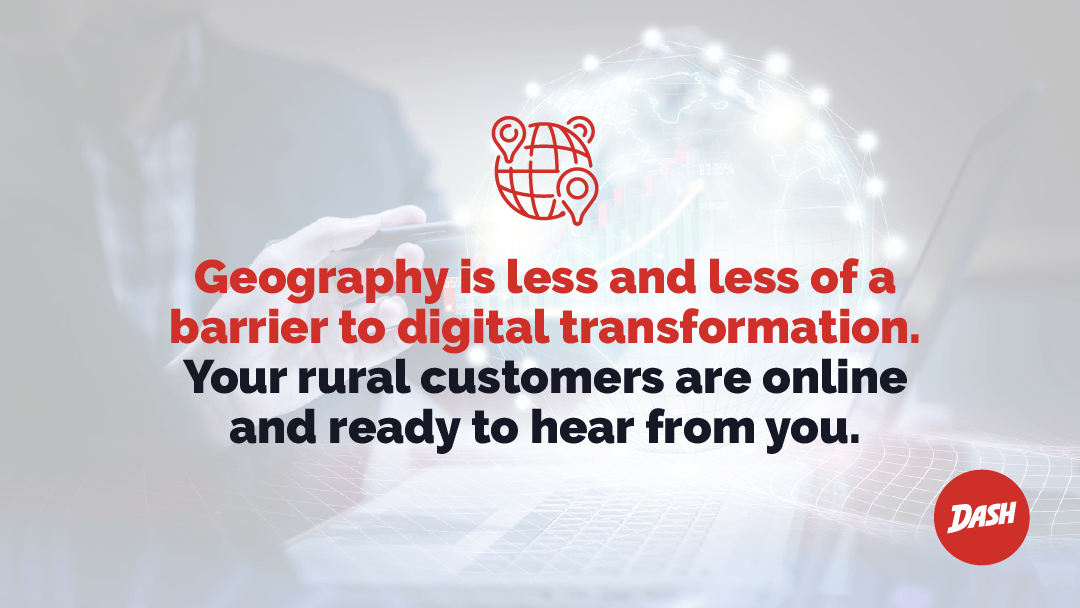
Your clients and prospects are generally aware that the landscape is changing, even if they don’t know why or how. Your choice to embrace this change shows them a path forward, and you’ll earn a substantial amount of attention, admiration and gratitude as a result.
These digital media transformations often provide the same advantages as other types of digital transformations. Removing manual entry through automated systems saves hours a day, and can allow you to reduce the cost of keeping a full-time employee. Industry professionals can additionally help you facilitate more efficient scalability in your digital media strategy. Businesses have to profit to survive, and that means they’re going to continue scaling out. Doing so more efficiently is key.
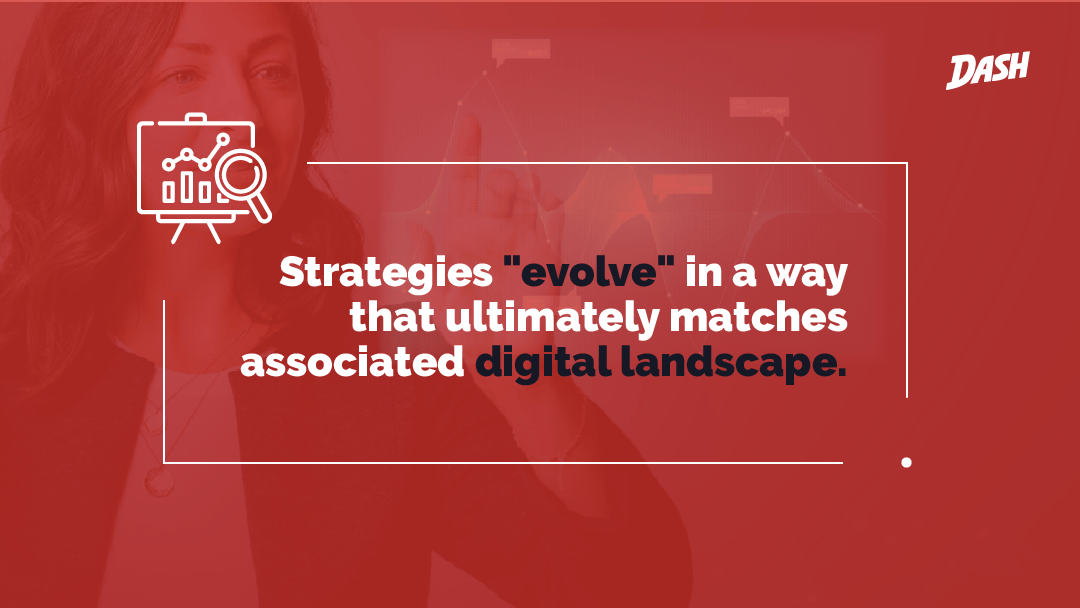
Positioning Strategy: Where “Strategy” Meets Media
All these tactics lead into a core means of media outreach for your brand, and that’s summed up in the term: “positioning strategy“. For the most efficient digital media strategy, your business needs to be properly positioned internally and externally. Here we’ll go a little deeper into B3 as regards digital media strategy–the Buyer, Brand, and Build approach.
Digital media strategy in marketing needs to utilize statistics built around varying “Buyers”. That’s your customers. This will include potential customers, tenured customers, and new customers. The level of involvement of each will determine the sort of positioning strategy you use. Sometimes customers buy from you once, and never again. Sometimes they establish an ongoing profitable relationship. That will depend on the second aspect of your business, the Brand.
Your brand may serve customers by providing specific products, or it could serve them by providing a service. Maybe it provides both. Ongoing consultation can be as valuable as vehicular parts, depending on clientele. So to most effectively serve buyers in terms of positioning, your brand must meet them where they are; that will incorporate content calibrated toward specific areas of the buyer’s journey.
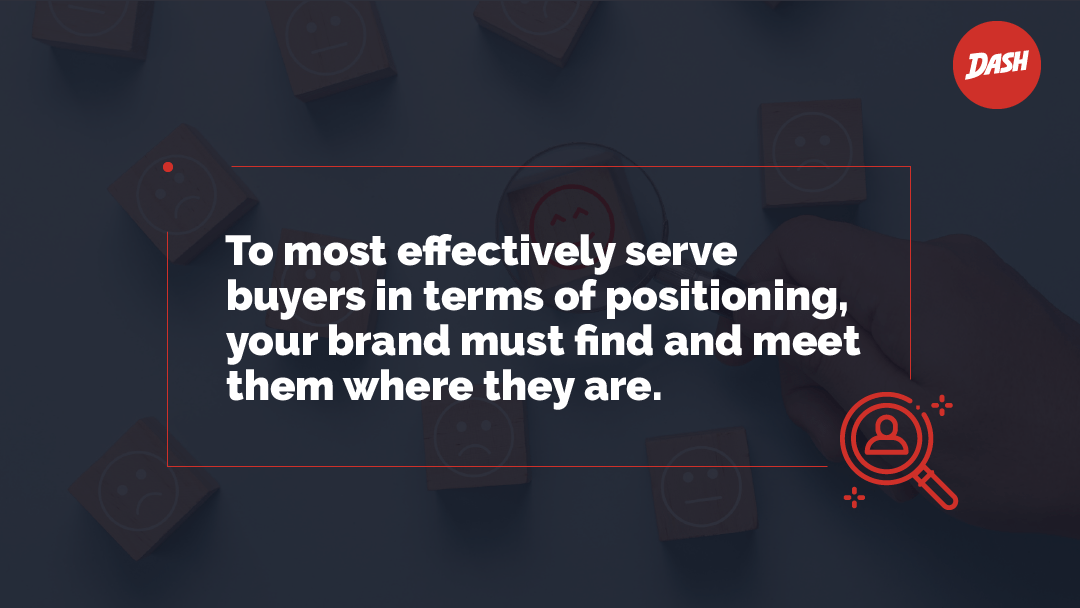
This is where digital media is vital.
There are three parts to the buyer’s journey in the “sales funnel“, and they “dovetail” into more complex scenarios from there. There’s awareness, consideration, then conversion.
At each stage, your digital media needs to show up with relevant value, engaging insights, and a consistent message about your brand values. The broad strokes of these should be developed early so they can permeate your content, and you can reap the benefits of the “expertise” your audience attributes to you through consistent media exposure.
Lastly, to get digital media strategy in marketing balanced for greatest associated profit, strategic design is necessary. Your final build is going to define your brand to buyers through multiple mediums and channels. If you have clarity on your message and strategy before you begin, you have the option of developing your team in house, or handing that strategy, with clear goals, over to other professionals who are ready to turn your vision into a reality.
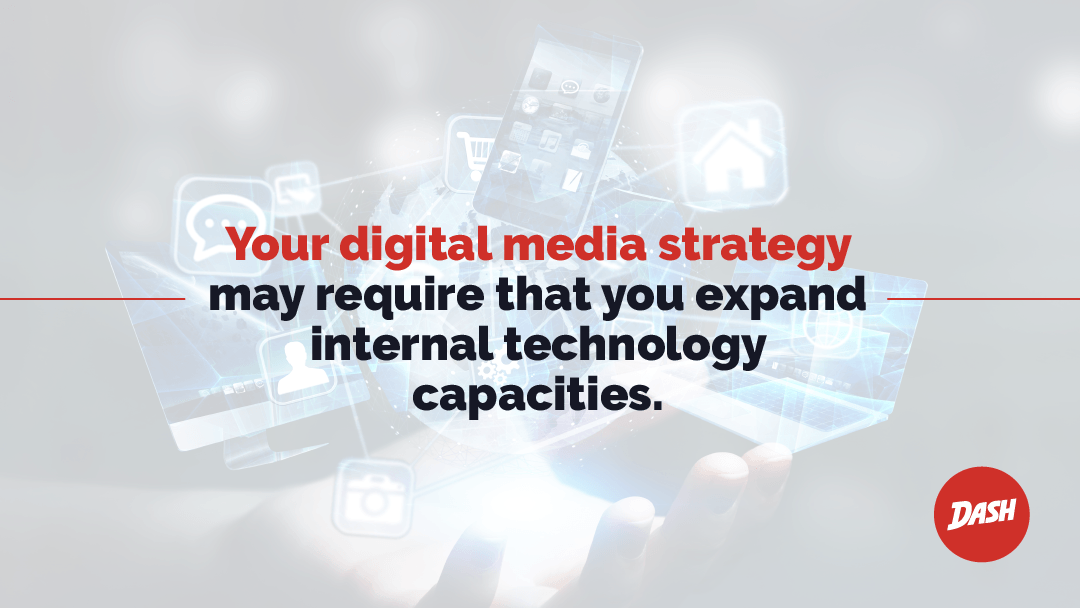
Staying Relevant To Shifting Tech And Innovation
It’s fundamental to position your brand for success. Doing this today incorporates digital media strategy which slightly differs from IT strategies in a few important respects. Getting the balance right will require maintaining prescience with changes shifting your business, and associated business strategy. To some extent, that’s going to involve geographical or logistical considerations.
This problem transitions based on tech–active transformation management is necessary. Owing to decentralization, a small business in Darwin can serve Sydney, Melbourne, or any city in New Zealand or Tasmania. You might even be able to court clients in South Africa, the UK, or the USA; if your products are a good fit. Then again, local geographical realities and international media restrictions may prevent you from full decentralization.

The world is smaller than it’s ever been, but geography will still play a part in how you market. This is because people don’t live in a world, or a region. They live in communities, with parks or beaches, or buildings that are very personal to them. So the best approach to reach people will be to integrate with their expectations for their community.
Regardless which way you go, research and prep are fundamental for ongoing success. These actions build muscle in a strategic sense. Accordingly, setting high goals, and finding ways to achieve your digital ambitions are vital to staying current when the digital landscape continues to evolve.
Since digital media strategy is in a continual state of flux, overall strategic impact must be considered for best outcomes. While all these things can be managed internally, it’s often useful to have a strategic ally to test your ideas with or to get wise counsel. Professionals like those at Dash Marketing design business models around keeping pace with cutting-edge tech trends in marketing. We strive to help businesses not only transcend competitors, but break new ground and find new ways to embrace growth through change.
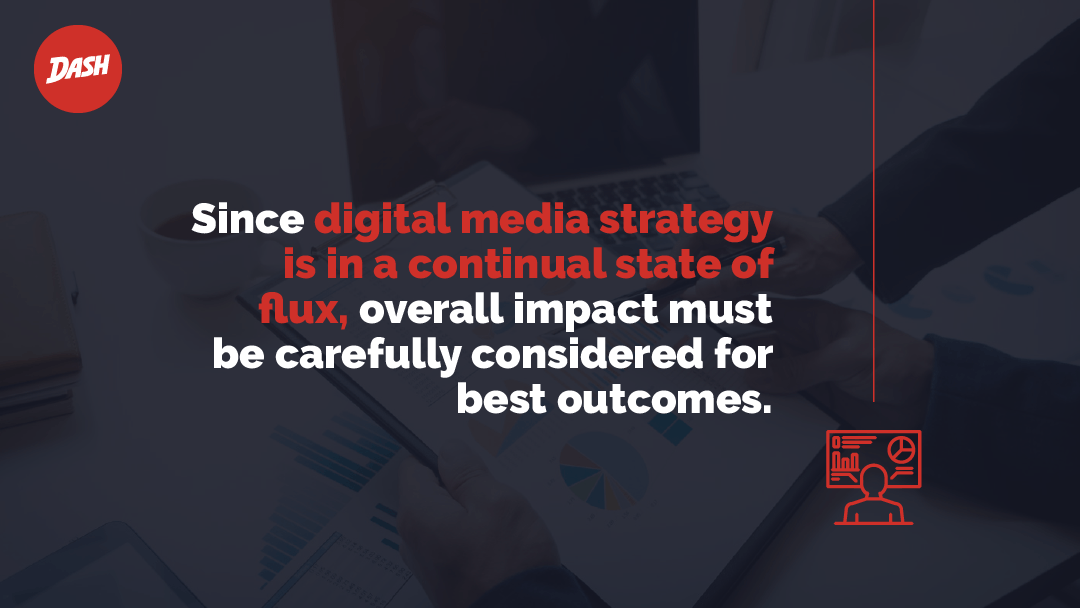
Original Post: Embracing Continuous Digital Media Strategy Optimization








 What Are Soft Skills?
What Are Soft Skills? The Key Soft Skills in Demand
The Key Soft Skills in Demand 12 Ways to Develop Your Soft Skills
12 Ways to Develop Your Soft Skills 2 Steps to Sell Your Soft Skills
2 Steps to Sell Your Soft Skills












